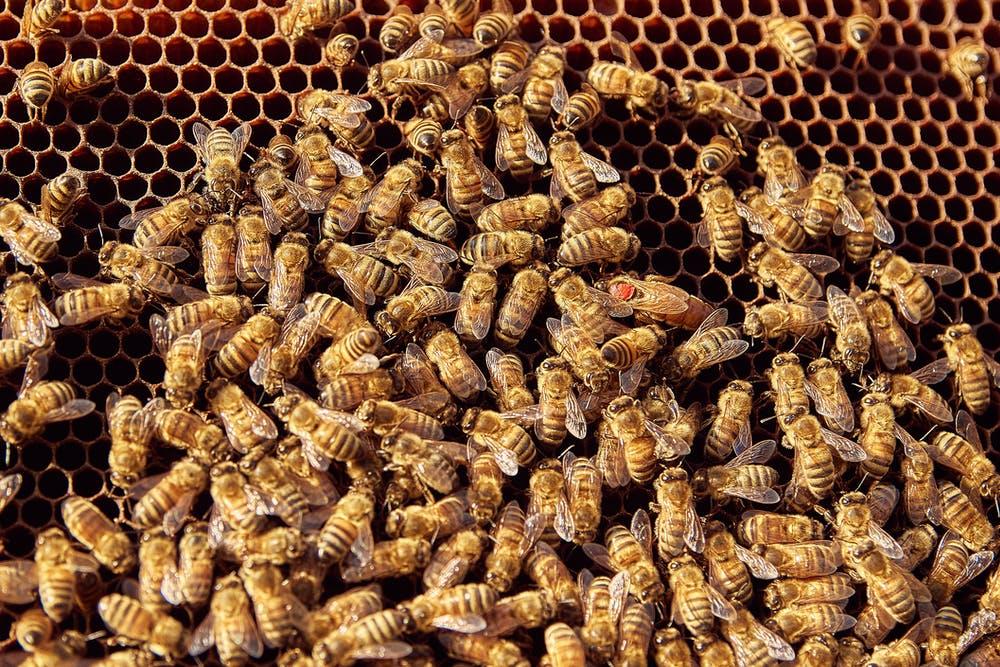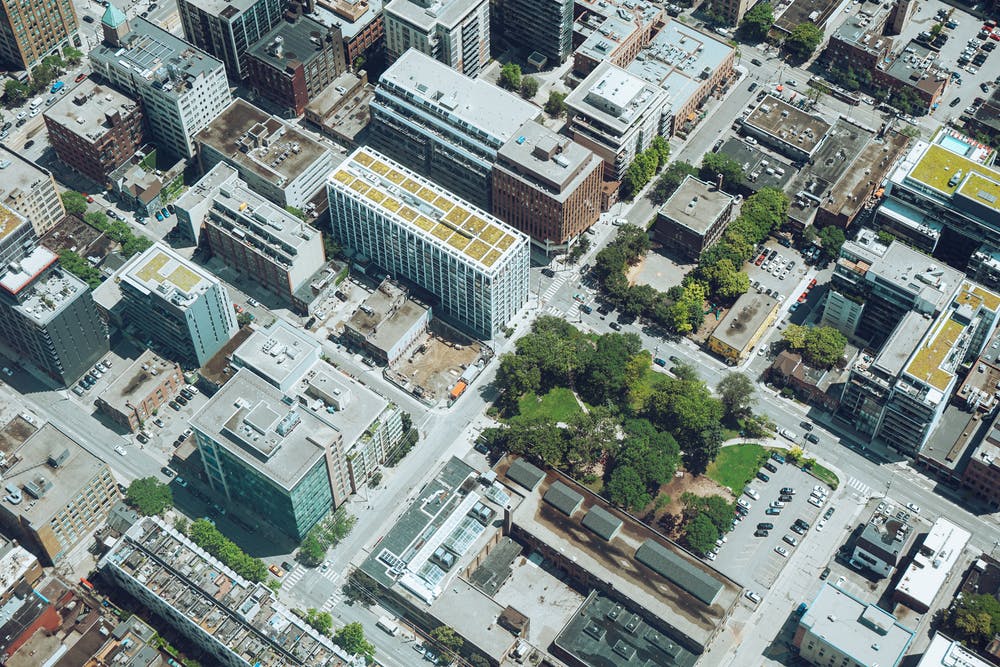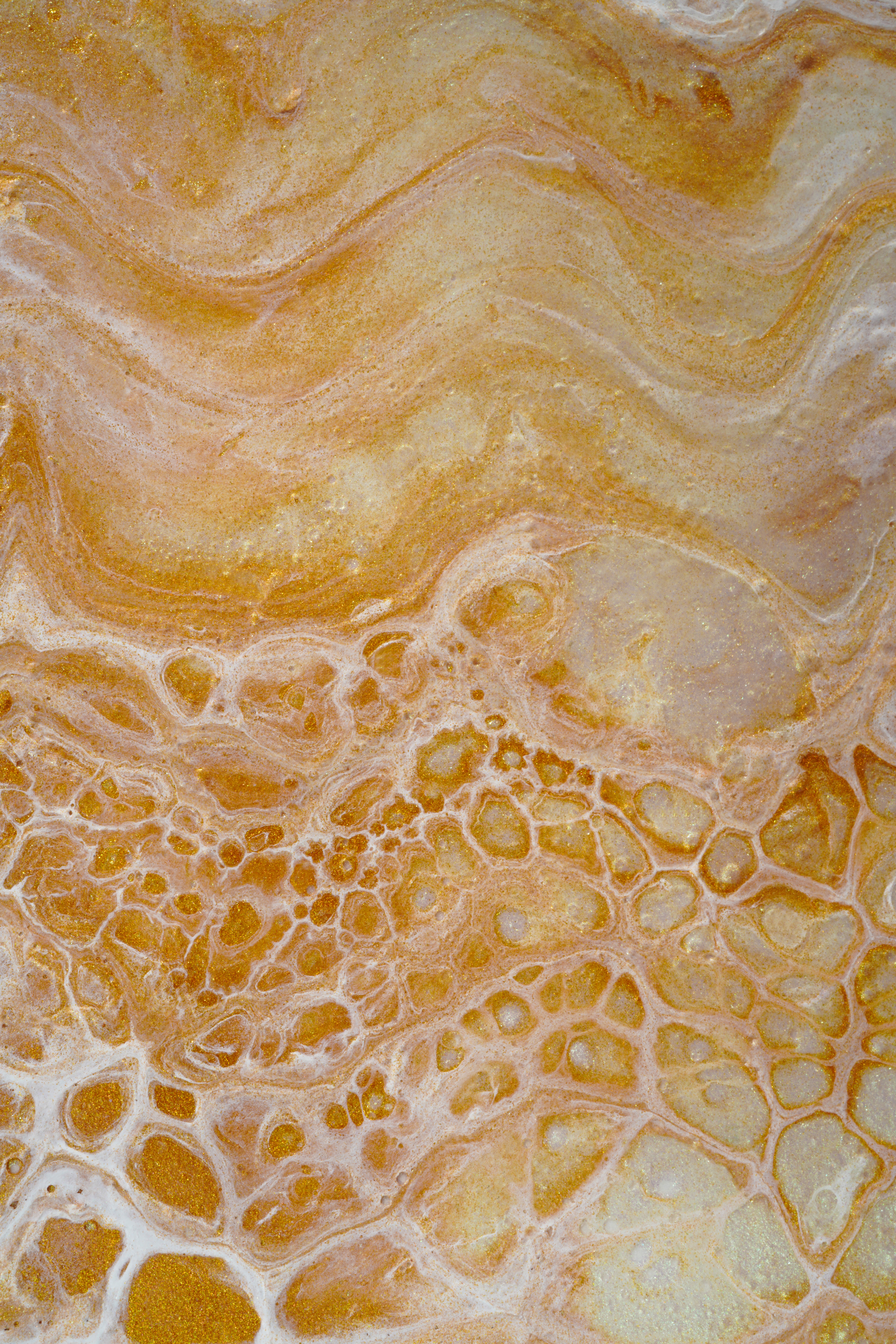Sour Honey: good design and bad beekeeping
Bees are essential to the survival of all species, but in our attempts to make them a part of city life, have we missed the mark?

Words:
Sara Chiarotto O’Brien
Until 2010, New York City’s department of public health classified bees as “wild and dangerous animals”. Keeping bees in the city, even a single hive, was punishable by $2000 fines, putting many black market beekeepers in direct conflict with neighbours who sought to rat out the buzzing nuisances next door.
Flash forward ten years and beekeeping is not only legal, but booming. As of 2020, New York had over 300 registered hives, each numbering up to 80,000 individual bees.

The developments in New York, and in cities across North America, have been accepted almost unanimously as a win for both the environment and local communities. Citizens benefit from a local honey supply, while threatened honeybees see their populations stabilize.
The human affinity for apiculture predates modern civilization, with the first records of honey harvesting dating back more than ten thousand years. In the time since, bees have taken on incredible symbolic weight across cultures as miracleworkers capable of turning dust into liquid gold.
Even more fascinating to many is the bee’s methods of design. Arguably the greatest architects of the natural world, the hexagonal structure of a beehive is uniquely optimized to support the maximum possible weight using the least possible materials and energy. Their design is built for longevity, such that a single colony can remain in a hive for more than a hundred years. Socially, the cooperative abilities of bees rival those of humans, with such specific roles as queen, water collector, and even undertaker.
“He must be a dull man who can examine the exquisite structure of a comb, so beautifully adapted to its end, without enthusiastic admiration,” wrote Charles Darwin in 1859.
The insect’s ability to design a near-perfect system of production and social harmony have inspired humans to take advantage. As pesticide use, wildland conservation, and urban greenspaces deteriorate, urban beekeeping presents itself as the perfect solution.
But what if it wasn’t?
While it is true that the hive-centred honey bee is optimally suited for social cohesion and pollination, the harmony of the honey bee hive has not translated into harmony for the urban honey bee.
In fact, widespread urban beekeeping could be doing more harm than good.
Dr. Gail MacInnis is a researcher with Montreal’s Concordia University. She’s spent the past few years exploring the ways that North America’s native bees are affected by urban environments. While MacInnis is encouraged by citizens’ desires to support urban bees, she is also wary of the unintended consequences of urban beekeeping.
“I think people have been sort of misled into thinking, ‘oh I’ll keep a hive in my backyard and this is helping with bee declines worldwide’. But it’s not,” she says.


What many don’t realize is that most native bees in the Northeastern Americas are ground nesting, meaning they live alone in the ground – not in hives.
The problems faced by honey bees, such as colony collapse disorder and poisoning, are largely the result of pesticides and high-density apiculture, where disease spreads quickly. Not only does urban beekeeping do nothing to solve the root causes of the honey bee’s suffering, it also poses a threat to native species by introducing competition for limited floral resources.
The consequences range from loss in biodiversity to inefficient pollination of flowers and crops, as many native bees evolved to pollinate local species of fruits and flowers better than a honey bee can.
“Keeping honey bees to save the bees is kind of like keeping chickens to save the birds,” explains MacInnis.
“Keeping honeybees to save the bees is kind of like keeping chickens to save the birds.”Dr. Gail MacInnis
When executed in conjunction with proper urban planning, using measures such as hive tracking and floral resource development, beekeeping can bring value to the urban social fabric. Left to the market, however, the uptick in urban apiculture could spell disaster for native bees whose habitats are not supported by human cultivators.
Urban beekeeping as a silver bullet has missed its mark. It’s a shame but also a reminder.
Though honey bees might not be the answer environmentalists or apiculturists were looking for, the bees still got one thing right: whether they live alone in the ground or in waxy nests by the thousands, wild bees have mastered the art of designing for systems. Left to their own devices, bees dictate the placement, density, and size of nests, melding with the local environment to both serve and benefit from it. They are versatile, adaptive, and design for the long run.
Good design, whether it’s for bees or for people, must resist the temptation to fall back on one-size-fits all solutions. When a problem arises, there is usually much left to be understood about its causes, stakeholders, and solutions. When we design products with the entire system in mind, thinking through processes from start to finish, we can bypass the consequences of narrow thinking and align form and function to get the most out of urban environments, just as bees get the most out of theirs.

More Stories
-
 17.11.2025 | News
Black Friday Sale - 45% off everything *including Stackware*
17.11.2025 | News
Black Friday Sale - 45% off everything *including Stackware*
Our biggest (and only) sale of the year is here. Over $460++ off cookware. 45% off everything.*
-
 05.11.2023 | News
Celebrating with Rolls-Royce
05.11.2023 | News
Celebrating with Rolls-Royce
Bringing design, innovation, sustainability, performance, luxury, and craftsmanship together.
-
 01.11.2023 | News
Utility Patent Granted
01.11.2023 | News
Utility Patent Granted
The ENSEMBL: Stackware Removable Handle has received a utility patent.
Free shipping on all North American orders.